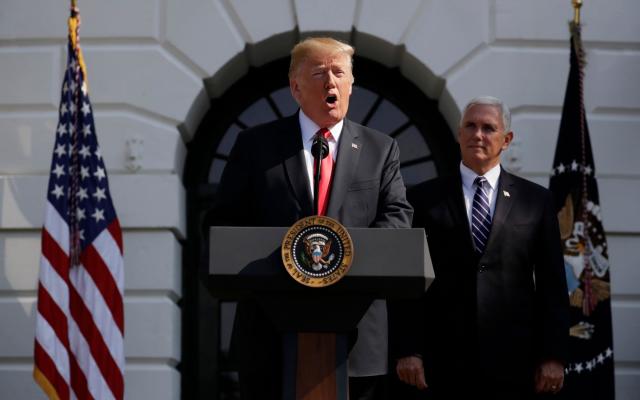Soybeans are a weak spot in President Donald Trump’s trade war with China as the country has imposed retaliatory tariffs to hit his voter base — American farmers. To defend against these tariffs, Trump has offered a short-term assistance of $12 billion to producers of soybeans, sorghum and other crops.
But on Friday, soybean tariffs may have actually given Trump a boost. They contributed to the robust GDP growth that the president touted — “We’ve accomplished an economic turnaround of historic proportions,” he said.
The U.S. economy grew 4.1% in the second quarter, partly due to a burst in soybean and corn exports, according to economists. In May, the latest data available, soybean exports nearly doubled compared to in April. Producers were in a rush to beat tit-for-tat sanctions, soybean exports are up 26% for the year compared to 2017.

In the second quarter, the U.S. recorded an 80% annualized jump in food, feed and beverage exports, mainly from soybeans and corn. Without that surge, exports would have increased 5.3% instead of 9.3%, which means the GDP growth would have been around 3.6%, according to Paul Ashworth, the chief U.S. economist at Capital Economics.
David Rosenberg, the chief economist of Gluskin Sheff, argues trade disputes may play an even bigger role in inflating GDP. “At least half the growth is coming from two trade-related issues — a soybean-led export burst and inventory accumulation. Net these out and we remain near 2%”, he tweeted on Thursday.
How sustainable could the growth be?
 President Trump speaks in White House after the second quarter GDP number is released. (Credit: The Telegraph)
President Trump speaks in White House after the second quarter GDP number is released. (Credit: The Telegraph) Trump seized the opportunity to boast about the strong economic results. “These numbers are very, very sustainable— this isn’t a one-time shot,” he said during a White House press conference on Friday.
But economists caution that the growth rate is hard to maintain. This is not the first time that soybeans have fueled a short-term bump in GDP. Back in mid-2016, U.S exporters experienced a boom when the Brazilian crop disappointed. The impact on nominal export growth was drastic — it hit 10% annualized growth in August, but fell to near-zero in December. Excluding soybeans and corn, the export growth was steady at around 5% in the second half of 2016.
Ashworth doesn’t expect this time to be different. He projects soybean exports to plummet in July, dragging nominal exports down by 1.8% compared with June, and the GPD number will be back to normal — at about 2.6% in the third quarter.
The trade truce between the U.S. and EU earlier this week doesn’t change his view. “In the global soybean market, the demand and supply are roughly balanced,” Ashworth told Yahoo Finance. He thinks the U.S. will end up exporting to a different country rather than China to mitigate the impact of the tariffs. “If you’re looking at the year as a whole, it doesn’t have any impact at all,” he said. “It just has an impact in one quarter and will be reversed in the next.”
Krystal Hu covers technology and economy for Yahoo Finance. Follow her on Twitter.
Above is from: https://www.yahoo.com/finance/news/chinas-tariffs-soybeans-fueled-us-gdp-bump-225326578.html